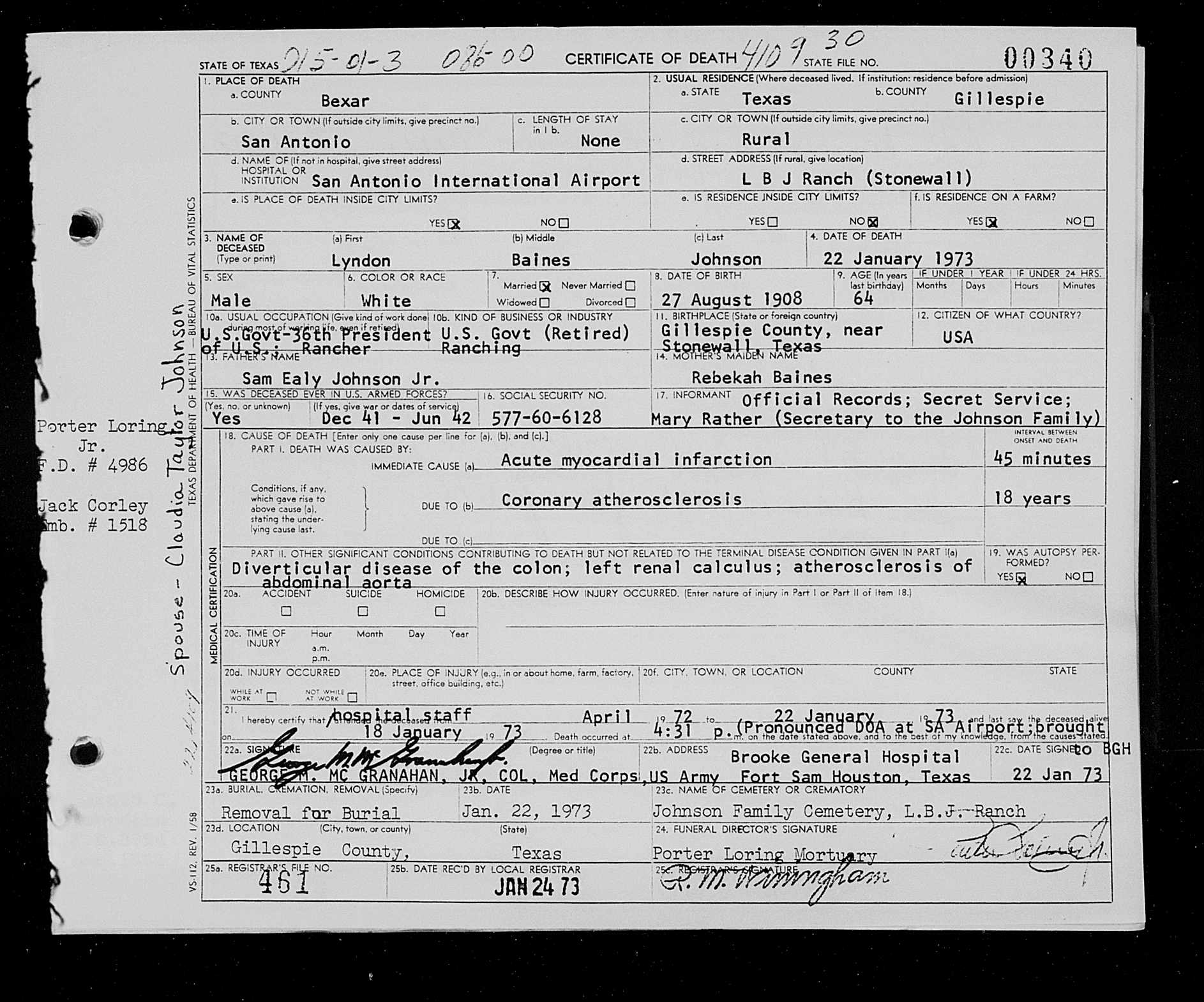When this RecordClick genealogist first heard the news of the death of Associate Supreme Court Justice Antonin Scalia this past weekend and then waited for the onslaught of huge headlines – which did indeed come – all I could do was sigh. One of the next things I thought about, however, is what lessons are there in this for the genealogist?
Justice Scalia can teach us something about the role of a death certificate.
It is a legal document after all. And it is a doc for which genealogists are always on the lookout.
So, what is it and why is it important?
LOTS OF DATA ON THESE CERTIFICATES
The short answer is that a death certificate is proof that a person is dead. That’s obvious. The information on a death certificate, though, may provide personal data including:
- Date of death
- Cause of death
- Place of birth
- Date of birth
- Names of parents
- Name of spouse
- Attending physician
- Informant
- Place of burial
- Funeral home.
All of this information has statistical importance. Immediately, a death certificate is part of the legal documentation needed as part of the burial process. It helps with transportation for burial in a state other than where the death occurred. Later on, a death certificate is needed to settle an estate. In the even longer term, this document is something a genealogist will cherish as a primary source of documentation.
The process of creating a death certificate becomes more complicated when an individual, such as Judge Scalia, passes away with no one in attendance and while on holiday in a state different from his place of residence. National Public Radio posted a piece on Facebook last Sunday, February 14, 2016, entitled, Remembrances; Justice Antonin Scalia, Known for Biting Dissents, Dies at 79. This piece does a good job of describing the process involved in declaring a person deceased in a rural area and what happens when gathering information for the death certificate.
LOCATION LOCATION LOCATION
Justice Scalia died in Presidio County, Texas. With 3,856 square miles, it is larger than the states of Rhode Island and Delaware. Its total population: approximately 7,800. The county seat is Marfa, Texas, with a population of approximately 1,900.
In these rural areas, people traveling long distances to events and sometimes a football game or a speech might be well over 100 miles away – one way. Many of these events are on Saturday – the day of the week that Judge Scalia passed away.
Many rural counties have limited health care facilities and few attorneys. They also often have county officials who do double duty. Sometimes it is might be that the County Clerk is also the coroner and a volunteer Emergency Medical Technician.
The first thing in the creation of a death certificate is to determine that the individual is indeed dead. Officials, usually law enforcement and medical assistance, are notified. The officials assess the situation and determine the next course of action. If the person is found to be deceased, the coroner is contacted and a judgment is made as to whether the death was due to natural causes or whether foul play might have been involved. The coroner contacts a physician for medical information. The documentation begins.
In Justice Scalia’s case, from reports this genealogist has read, there were some health issues. The evidence seen by this family history researcher indicates that the coroner contacted the Judge’s physician and that Justice Scalia had visited his doctor with complaints before the trip. The information provided by the physician to the coroner becomes part of the death certificate documentation. As an aside, the role of the physician is to determine what health problems an individual may have had and along with the coroner, helps decide on a course of action.
While the documentation is going on, usually the family and a funeral home are contacted. If it is indicated that an autopsy is not needed, the body is taken to the mortuary. The information needed for the death certificate is gathered and the process begins for the issuance of the document.
When transportation of the deceased across state lines is necessary, there is a protocol that includes the possession of a death certificate. Funeral homes in both locations then work together to insure that protocol is followed. The mortuary of the family’s choice works with the deceased’s loved ones to make arrangements for the funeral. These details may be part of the death certificate information or be added to amend the death certificate.
COMPLICATIONS AND INFORMATION WITH LBJ’s DEATH
Death is not always neat. President Lyndon Johnson had a heart attack and died in the San Antonio International Airport in 1973. His Texas death certificate provides insight as to his health issues and how long he had those problems. The informant, the family secretary, is listed and the genealogist doing research is able to get a quick snapshot of his life. (As an aside by this professional genealogist, it is worth a visit to Johnson’s Texas ranch where in the hill country one will find Lady Bird’s beloved wild flowers.)
In his memory, this genealogist thanks Justice Antonin Scalia for his service to this country and for reminding the genealogy community and public of the value of a death certificate as a legal document.
When you find a genealogist at RecordClick, you will get a professional who will get you and your family the important documents in your ancestors’ lives.







